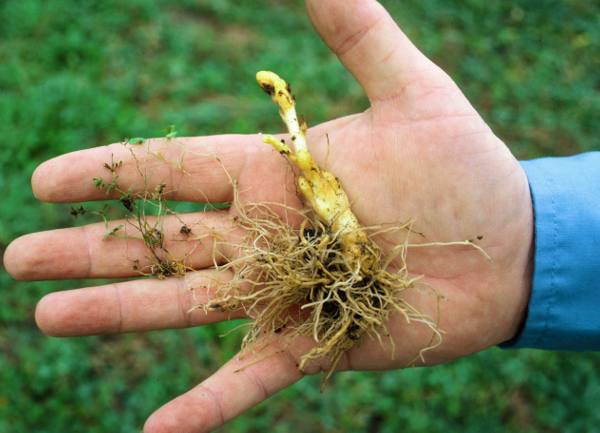October 5, 2012

In the early 1980s, a devastating parasitic weed was found in a tomato field in California. The infestation of branched broomrape (Orobanche ramosa) was treated aggressively and the field was quarantined to prevent further spread. When tomatoes were planted in the same spot more than two decades later, though, the branched broomrape quickly returned.
According to Lee Van Wychen, Ph.D., science policy director of the Weed Science Society of America, the recurrence is not a surprise. “When weed seeds drop to the soil, some can remain viable for many decades,” Van Wychen says. “Effective control requires a long-term commitment.”
Several alternatives are available to manage noxious weed seeds that become part of the soil seed bank. One is to quarantine the area and leave the seeds undisturbed until they are no longer viable. But as the broomrape example shows, the length of time the area will need to be quarantined is an unknown.
In some instances, the soil is fumigated in an attempt to destroy noxious weed seeds. In other instances, the soil is lightly tilled and a nitrogen fertilizer applied to promote germination and encourage the seeds to sprout. Once they’ve emerged, the weeds are pulled, tilled or treated with an herbicide to keep them from reseeding.
“None of these options is a magic bullet that will work overnight or kill 100 percent of the weed seeds each and every time,” Van Wychen says. “Persistence is the key.”
The Branched Broomrape Case Study
Branched broomrape is a prolific seed producer, which significantly compounds efforts to control it. A single plant can produce 50,000 or more tiny seeds that are easily spread by people, animals, farm machinery, wind and water. When the weed seeds germinate, they attach to the roots of host plants and drain them of water and nutrients – devastating tomatoes, potatoes, peppers, beans and other important crops that branched broomrape prefers.
As a result, California officials quickly sprang into action when the most recent outbreak of branched broomrape was discovered. The San Benito Agricultural Commissioner took the lead in a multifaceted response – quarantining the site again and pulling in state and federal experts and university personnel to lend their expertise. The California Department of Food and Agriculture has been involved, as well as the USDA’s Animal and Plant Health Inspection Service (APHIS).
“It was a pretty serious infestation,” said Richard Smith, farm advisor with the University of California Cooperative Extension. “We collected big garbage bags of branched broomrape from the 70-acre plot where it was discovered. And when we mapped the site, it overlapped almost precisely with the 1980s outbreak.”
Smith says officials are still evaluating soil fumigation and other potential alternatives for dealing with the long-lived seeds still hidden in the soil.
Branched broomrape has earned a well-deserved spot on the federal noxious weed list. It has been found in several U.S. states to date, including California, Illinois, Kentucky, New Jersey, North Carolina and Texas.
About the weed science society of America
The Weed Science Society of America, a nonprofit scientific society, was founded in 1956 to encourage and promote the development of knowledge concerning weeds and their impact on the environment. The Weed Science Society of America promotes research, education and extension outreach activities related to weeds, provides science-based information to the public and policy makers, fosters awareness of weeds and their impact on managed and natural ecosystems, and promotes cooperation among weed science organizations across the nation and around the world. For more information, visit www.wssa.net.
You May Also Like




